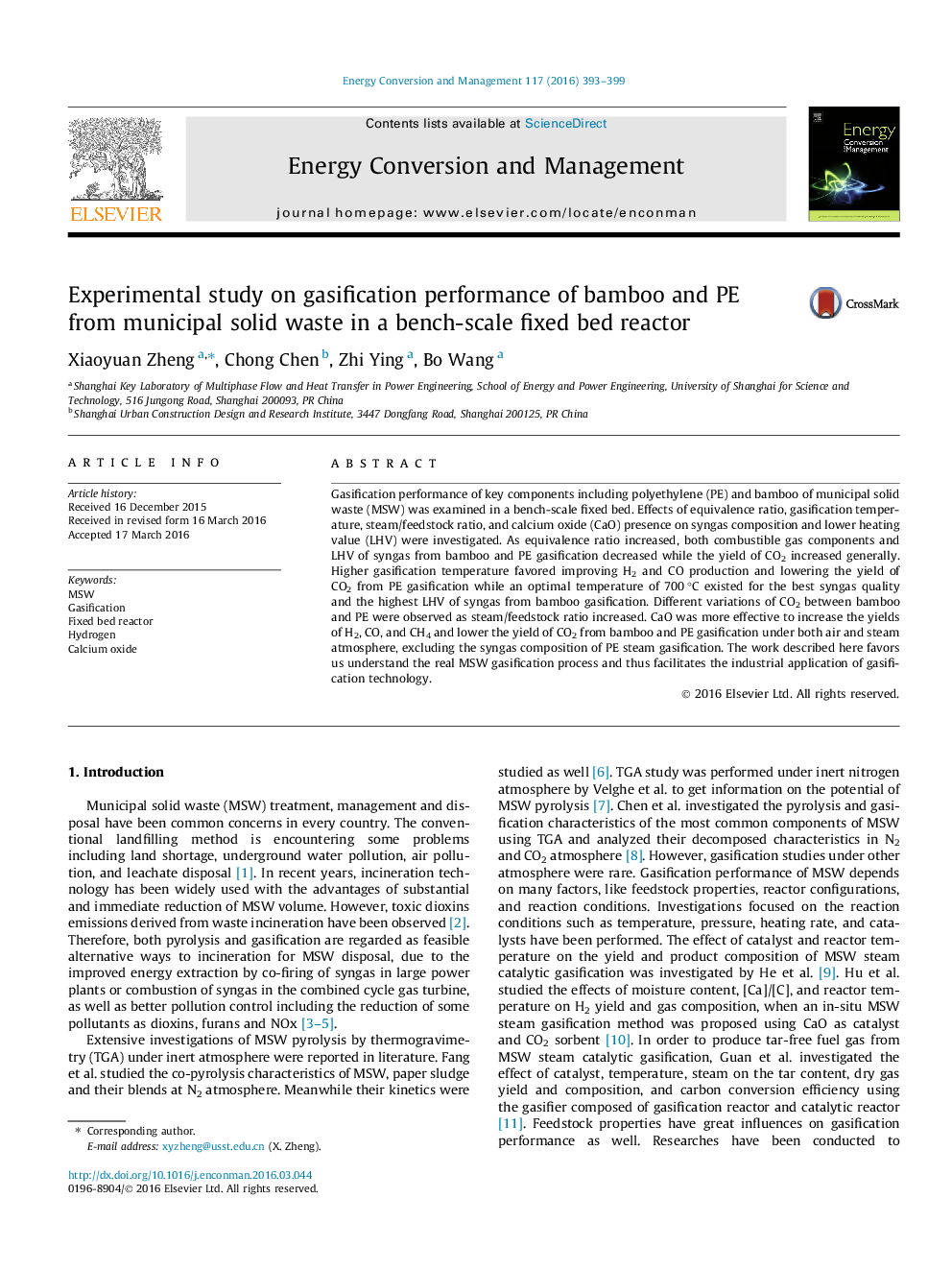| Article ID | Journal | Published Year | Pages | File Type |
|---|---|---|---|---|
| 7160819 | Energy Conversion and Management | 2016 | 7 Pages |
Abstract
Gasification performance of key components including polyethylene (PE) and bamboo of municipal solid waste (MSW) was examined in a bench-scale fixed bed. Effects of equivalence ratio, gasification temperature, steam/feedstock ratio, and calcium oxide (CaO) presence on syngas composition and lower heating value (LHV) were investigated. As equivalence ratio increased, both combustible gas components and LHV of syngas from bamboo and PE gasification decreased while the yield of CO2 increased generally. Higher gasification temperature favored improving H2 and CO production and lowering the yield of CO2 from PE gasification while an optimal temperature of 700 °C existed for the best syngas quality and the highest LHV of syngas from bamboo gasification. Different variations of CO2 between bamboo and PE were observed as steam/feedstock ratio increased. CaO was more effective to increase the yields of H2, CO, and CH4 and lower the yield of CO2 from bamboo and PE gasification under both air and steam atmosphere, excluding the syngas composition of PE steam gasification. The work described here favors us understand the real MSW gasification process and thus facilitates the industrial application of gasification technology.
Related Topics
Physical Sciences and Engineering
Energy
Energy (General)
Authors
Xiaoyuan Zheng, Chong Chen, Zhi Ying, Bo Wang,
